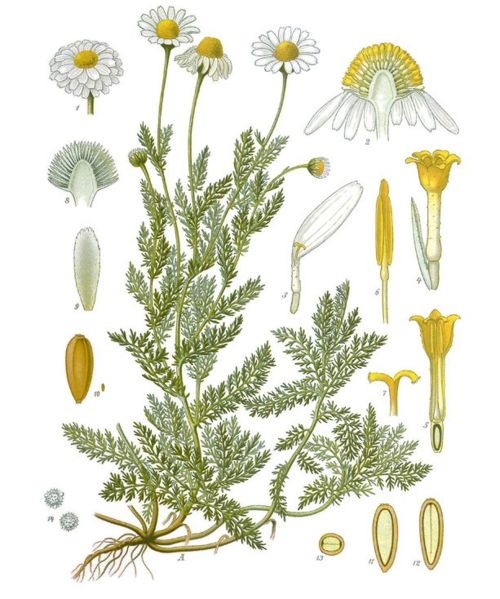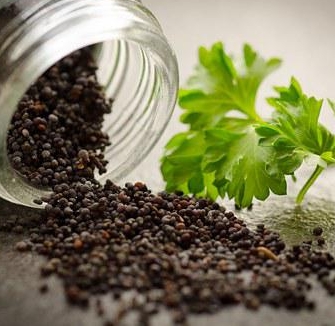The Gentle Healer in Your Teacup
There’s a reason chamomile is one of the most well-known herbs in the world. It’s often the first plant remedy people turn to when stress, sleeplessness, or a cranky tummy sets in—and for good reason. Don’t let its popularity fool you, though: chamomile isn’t just a mild bedtime tea. It’s a powerful, multi-faceted healer with deep roots in both folk and clinical herbalism.
From ancient Egypt to your own kitchen cabinet, chamomile has been cherished for millennia as a remedy for the body, mind, and spirit. With its cheerful daisy-like flowers and sweet, apple-honey scent, chamomile carries a signature of gentleness—but underneath its softness lies profound strength.
A Balm for the Nervous System
Chamomile’s most celebrated gifts come from its nervine and antispasmodic properties. It’s particularly beloved for its ability to calm the mind and relax the body without sedating it. A warm cup of chamomile tea can ease the edge off anxiety, irritability, and restlessness in children and adults alike.
Chamomile is a wonderful ally for those who feel “wound tight”—when your nerves feel frayed, your belly clenches, or your sleep just won’t come. Its action is subtle, like a hand on your shoulder reminding you to breathe, but powerful enough to ease tension that’s taken root in both mind and muscle.
It’s also one of the safest herbs we have, making it a staple in formulas for children, elders, and those in delicate states of health.
A Stomach Soother and Digestive Ally
Chamomile doesn’t stop at the nervous system. It’s also one of our finest carminative herbs, helping to ease digestive discomfort from gas, bloating, nausea, and indigestion. For people whose digestive issues are linked to stress (think nervous stomach, IBS, or tension-induced cramps), chamomile is especially effective. It gently tones the digestive tract while calming spasms and supporting healthy peristalsis.
It’s a classic remedy for colicky babies and teething toddlers, too—used as a tea, tincture, or even soaked into a washcloth for them to chew on.
Topical Healing and Anti-Inflammatory Magic
Chamomile’s anti-inflammatory and vulnerary (wound-healing) actions make it just as useful externally as it is internally. In fact, you’ll find chamomile in everything from diaper rash creams to eye washes. It can be used in compresses for inflamed skin, poultices for irritated gums, or as a gentle eye rinse for conjunctivitis (be sure it’s well-strained!).
Its essential oils have shown antimicrobial and antifungal activity, adding even more potency to this deceptively dainty flower.

MATERIA MEDICA: CHAMOMILE
Latin Name: Matricaria chamomilla (German chamomile) or Chamaemelum nobile (Roman chamomile)
Family: Asteraceae
Energetics: Cooling, drying, slightly bitter and sweet
Parts Used: Flower
Taste: Sweet, slightly bitter, aromatic
Key Actions
- Nervine
- Carminative
- Anti-inflammatory
- Antispasmodic
- Antimicrobial
- Diaphoretic
- Vulnerary
- Mild sedative

Indications & Uses
- Anxiety, stress, and insomnia
- Digestive complaints: gas, bloating, nausea, cramping
- Colic and teething in infants
- Menstrual cramps
- Tension headaches
- Inflammatory skin conditions
- Conjunctivitis and eye strain
- Mild fevers (especially in children)
- Primary use is in any kinds of stomach issue
- Is very good for calming children
- Good for IBS
- Relaxes the stomach, decreases stomach sensitivity
- Helps nausea, morning sickness, motion sickness and nervous indigestion
- Relaxant to acid indigestion
- Soothing and tonic for gastric distress 2-3 hours after a meal
- Good for gastric ulcers and gastritis
- Also good for diverticulitis
- Also calming to the nervous system, helps in any situation that has a stomachache and sleeplessness
- Good for colds
- Will decrease hemorrhoid swelling
- Good as an enema for mucous colitis and spastic colitis
- Good to heal wounds faster, internally and externally
- Helps both constipation and diarrhea
- Is a good relaxant and eases menstrual pain
- Good for restless and over complaining individuals, when a person refuses to be comforted
- Also good for allergies and asthma
- Is interchangeable with Roman Chamomile Anthemis nobilis
Preparation & Dosage
Tea: 1–2 tsp of dried flowers per cup of hot water. Steep 10–15 minutes. Take 1–3 times daily as needed.
Tincture: 1:5 in 40–60% alcohol, 1–3 mL (about 20–60 drops), 1–3x daily.
Topical: Use cooled tea or dilute tincture as a compress, poultice, or eye wash.
Essential Oil: Dilute before applying to skin. Never ingest essential oil directly.
Safety & Contraindications
Chamomile is extremely safe for most people, including children and during pregnancy. However, those with allergies to plants in the Asteraceae family (like ragweed, echinacea, or daisies) should use it with caution or avoid it altogether. Rare allergic reactions have been reported, especially with topical use.
A Gentle Giant
In the language of plants, chamomile speaks with a soft voice—but its medicine runs deep. It teaches us that healing doesn’t always have to be loud or forceful. Sometimes, the most powerful medicine is the one that soothes, the one that rocks you gently to sleep, the one that meets your tension with ease.
Whether you’re reaching for a remedy to help you sleep, soothe a bellyache, or simply take a pause in your day, chamomile is the friend that shows up with a warm cup and a calm presence. And we believe the world could use more of that.
Additional Sources:
- The Herbal Academy. (n.d.). German Chamomile (Matricaria chamomilla). The Herbarium. Retrieved June 4, 2025, from https://herbarium.theherbalacademy.com/monograph/chamomile-german
Browse by category
- Aphrodisiacs
- Aromatherapy
- Astrology & Magic
- Ayurdeva
- Botany Foraging & Gardening
- Chakras
- Digestion
- Earth Connection
- Energetics
- Flower & Gem Essences
- Folk Traditions
- Herbalism & Holistic Health
- Immune Support
- Materia Medica
- Mushrooms
- Nutrition
- Seasonal Living: Autumn
- Seasonal Living: Moon Cycle
- Seasonal Living: Spring
- Seasonal Living: Summer
- Seasonal Living: Winter
- Skin & Body Care

Don’t Miss a Thing!
Enter your email below to be the first to know about sales, new products and tips for taking care of your pieces.


